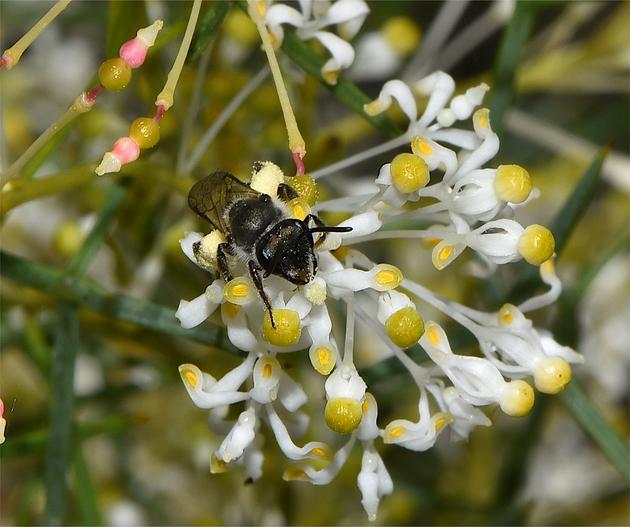Spider Flower
(Grevillea paniculata)
Spider Flower (Grevillea paniculata)
/
/

kate brown
CC BY 2.0
Image By:
kate brown
Recorded By:
Copyright:
CC BY 2.0
Copyright Notice:
Photo by: kate brown | License Type: CC BY 2.0 | License URL: https://creativecommons.org/licenses/by/2.0/ | Uploader: katebrown382 | Publisher: Flickr









Estimated Native Range
Summary
Grevillea paniculata, commonly known as Spider Flower, is an evergreen shrub native to the sandy plains and sclerophyll forests in Southwestern Australia, particularly adapted to the well-drained soils and Mediterranean climate of the region. This species is endemic to the south-west of Western Australia. It typically grows to a height of 0.6 to 3 meters and has a spreading habit. The Spider Flower is notable for its intricate inflorescences, which consist of white, cream, or yellow flowers that bloom from June to November (early winter to late spring) in its native habitat. These flowers are quite showy and attract a variety of pollinators, including birds and bees.
Grevillea paniculata is valued for its drought tolerance and unique floral display, making it a suitable choice for water-wise gardens, native plant landscapes, and as a feature shrub in mixed borders. It thrives in full sun to part shade and requires well-drained soils, preferably sandy or loamy, and is tolerant of low water conditions once established. While it is generally low-maintenance, it can be susceptible to root rot in poorly drained soils. In areas with heavy clay soils, raised beds or mounds can help improve drainage. Pruning after flowering can encourage a more compact growth habit and enhance the shrub’s ornamental appeal. It is not known for aggressive roots or significant disease problems, but it should be monitored for common pests such as aphids and scale insects.CC BY-SA 4.0
Grevillea paniculata is valued for its drought tolerance and unique floral display, making it a suitable choice for water-wise gardens, native plant landscapes, and as a feature shrub in mixed borders. It thrives in full sun to part shade and requires well-drained soils, preferably sandy or loamy, and is tolerant of low water conditions once established. While it is generally low-maintenance, it can be susceptible to root rot in poorly drained soils. In areas with heavy clay soils, raised beds or mounds can help improve drainage. Pruning after flowering can encourage a more compact growth habit and enhance the shrub’s ornamental appeal. It is not known for aggressive roots or significant disease problems, but it should be monitored for common pests such as aphids and scale insects.CC BY-SA 4.0
Plant Description
- Plant Type: Shrub
- Height: 1-2 feet
- Width: 2-3 feet
- Growth Rate: Moderate
- Flower Color: White, Pink
- Flowering Season: Winter, Spring
- Leaf Retention: Evergreen
Growth Requirements
- Sun: Full Sun, Part Shade
- Water: Low
- Drainage: Fast, Medium
Common Uses
Bee Garden, Bird Garden, Butterfly Garden, Drought Tolerant, Hummingbird Garden, Low Maintenance
Natural Habitat
Sandy plains and sclerophyll forests in Southwestern Australia
Other Names
Common Names:
Scientific Names: , Grevillea paniculata, Hakea paniculata,
GBIF Accepted Name: Grevillea paniculata Meisn.